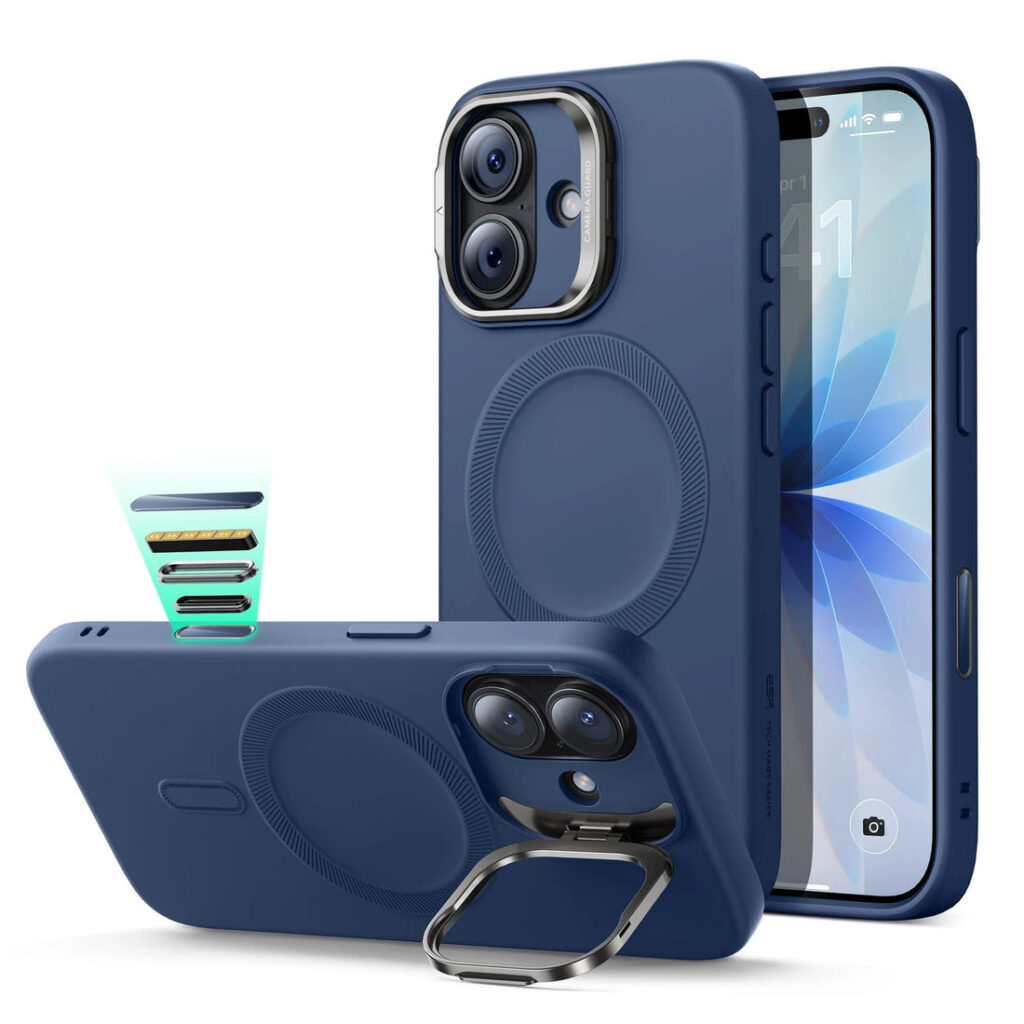October 2025 – Major news outlets dropped a bombshell on the tech world: to celebrate the 20th anniversary of the original iPhone’s 2007 debut, Apple is breaking its decade-old naming tradition. In 2027, they’re skipping the iPhone 19 entirely and launching the heavy-hitting iPhone 20 series! This isn’t some random move; it’s Apple replaying its classic “milestone playbook.” It brings back memories of the 2017 shocker when the iPhone X skipped the iPhone 9, and it signals that Apple is gearing up to change the game for the iPhone’s next decade.
History Repeats! From iPhone X to iPhone 20 – Why Does Apple Love Skipping Numbers?
Apple’s obsession with “skipping numbers” isn’t new. Back in 2017, for the iPhone’s 10th anniversary, Apple jumped straight from the iPhone 8 to the iPhone X (the Roman numeral for 10). It launched with a game-changing “all-screen design + Face ID” that dragged the entire smartphone industry into a new era. While some people complained about the confusing name, the iPhone X’s “decade-defining” status stuck, it sold like crazy worldwide, and became the design template for every iPhone that followed.
Now, for the 20th anniversary, Apple is pulling the same trick by skipping the iPhone 19, but their ambitions are even bigger this time. According to Omdia analyst Heo Moo-yeol, the iPhone 20 isn’t just a name change – the hardware is reportedly loaded: curved-edge displays, a notch-free design, and under-display Face ID and front camera technology. They’re clearly trying to recapture the “redefine the phone” boldness of the iPhone X. Let’s be real, skipping a number isn’t just a whim; it’s Apple’s “secret sauce” – using unconventional moves to max out the iPhone 20’s “anniversary hype” and make sure it enters the scene with an “undisputed king of the year” aura.
2026-2027 Release Timeline Leaked! Foldables and Budget Models Are Coming
Piecing together reports from Techtimes, Macworld, and 9to5Mac, Apple’s iPhone release plan for the next two years is clear enough to “mark your calendars.” It’s a classic “transition year setup, anniversary year explosion” rhythm:
- 2026: High-End First, Testing the Foldable Waters
As the “appetizer” before the 20th-anniversary main course, Apple will only launch premium models in September 2026, completely cutting the standard iPhone 18. We’ll see the iPhone 18 Pro, Pro Max, and Air models all debut. The real headline grabber? The first-ever foldable iPhone – the iPhone Fold – is finally arriving! This move makes their strategy obvious: save the big R&D firepower for the 2027 blockbuster, while using the foldable to test the high-end market and complete their product lineup. - 2027: Full-Year Excitement, Covering All Price Points
2027 is shaping up to be Apple’s “iPhone flood” year, with two major launches:
First half of the year will see the budget-friendly iPhone 18e, officially establishing the “e-series” as a regular entry-level line, squarely targeting that $400-$550 price bracket.
The second half is the main event – the core 20th-anniversary lineup arrives: the standard iPhone 20, Pro/Pro Max, Air models, plus the second-gen foldable iPhone Fold 2. The most interesting part? Macworld even dug up specific timing: the iPhone 20 and iPhone 18e might debut as early as March to build hype, while the Pro models and foldable will stick to the usual September slot, keeping the excitement going all year long.
Naming Debate Explodes! Are iPhone 53 and iPhone 104 on the Way? Users Plead for a New System
The moment Apple announced the number skip, the iPhone naming system was thrown into the spotlight again. 9to5Mac asked the burning question: We’re already at iPhone 17. If they keep counting up like this, are we getting an iPhone 53 or iPhone 104 in the future? It’s a mouthful, and consumers won’t even remember the names!
Many users echoed the sentiment, begging Apple to ditch the numbers and follow the Mac and iPad naming logic – “Product Name + Year” is so much simpler. Think “iPhone (2025)” or “iPhone Air (2027)” – you instantly know it’s the new model from that year. This idea isn’t coming from nowhere: Apple’s iOS and macOS already do this. MacBook Air and iPad Pro are just distinguished by size and定位, no numbers needed.
But there’s pushback too: the iPhone number sequence has been used for over a decade. Everyone’s used to it – you say “iPhone 17,” and people know it’s the 2025 model. Suddenly changing the naming could just cause confusion. Looks like Apple needs to carefully balance “innovative naming” with “user habits.”
Accessory Market is in a Frenzy! Apple’s Official Case vs. ESR’s Silicone Case – Which Gives You More?

The new iPhones aren’t even out yet, but the accessory world has become a battleground. Just look at the iPhone 17 cases – Apple’s official offering and third-party champ ESR’s silicone case are facing off in a direct “Premium vs. Practical” showdown, making “which one to choose” a hot topic online.
First, check out the iPhone 17 Silicone Case with MagSafe from Apple’s website. It follows the “Refined + Ecosystem” path. Made with 45% recycled silicone, it fits perfectly with Apple’s eco-friendly image. The built-in MagSafe magnets align perfectly with original chargers and battery packs, providing rock-solid charging efficiency. The design is minimalist, with colors made to match the iPhone 17’s body, and it’s gone through Apple’s rigorous testing, so no worries about signal or wireless charging issues. The downside is obvious: the price is steep, often $59-$79, and the features are pretty basic – besides protection and compatibility, there are no extra surprises.
Now, look at ESR’s newly launched Navy Blue Silicone Case for iPhone 17 with Camera Control. It’s a dream come true for practical users, with value for money turned up to the max. The cloud-soft silicone material feels smooth, is anti-slip, and wipes clean easily. Its 5-layer protection structure has passed MIL-STD-810H military-grade drop certification – it can handle an 11-foot (about 3.35-meter) drop without a problem; daily bumps and knocks are nothing.
The best part is its attention to detail: a 2.0mm raised, fully wrapped camera bar + a zinc alloy lens guard, plus a built-in dust-proof camera cover, giving the lenses “dual protection” against scratches and dust. A 1.2mm raised lip keeps the screen safe from scratches when the phone is placed face down. Even better, there’s a hidden multi-function stand next to the camera frame that works in both portrait and landscape mode – no need to hold it for watching videos or video calls, and it doesn’t block the MagSafe ring, so wireless charging still works perfectly. The price is the real kicker: originally $34.99, using discount code HLW15 now gets you 15% off, and buying two or more with code HLW20 gets you 20% off, bringing the price down to just $30.99 – less than half the price of the official case.
Simply put, it’s a choice between the “Heart-over-Head Crew” and the “Practicality-First Gang”: The official case wins on brand prestige, eco-materials, and ecosystem integration, suited for Apple fans who want that polished feel. ESR wins with military-grade protection, a hidden stand, a lens dust cover, and all those practical features, plus a user-friendly price tag, hitting the sweet spot for most people’s daily needs. This fierce competition in the accessory world actually benefits consumers – no matter what you’re looking for, there’s an option for you.
Final Thought: Is the 20th Anniversary iPhone 20 About to Change the Industry’s Direction?
Apple’s move to skip the iPhone 19 might seem reckless, but it’s actually a master plan: using the 20th-anniversary buzz to generate maximum attention, using hardware innovations like curved and foldable screens to break free from sameness, covering all users with a “premium + budget” two-phase launch, and relying on the cutthroat accessory market to strengthen ecosystem loyalty.
As for the naming debate, it might just be a side story – Apple is probably just looking for a new brand expression for the iPhone’s next decade. But no matter what the name is, Apple’s goal is clear: in today’s smartphone market of competing for the same customers, they’re using the iPhone 20 to cause another “industry earthquake.” Just like the 2007 original iPhone started the touchscreen era, and the 2017 iPhone X started the all-screen era, the 2027 iPhone 20 might just lead us into the brand new arena of “curved all-screen devices + a foldable ecosystem.” And the epic battle among accessory makers will only make this transformation more exciting to watch.
Information contained on this page is provided by an independent third-party content provider. Binary News Network and this Site make no warranties or representations in connection therewith. If you are affiliated with this page and would like it removed please contact [email protected]



Comments